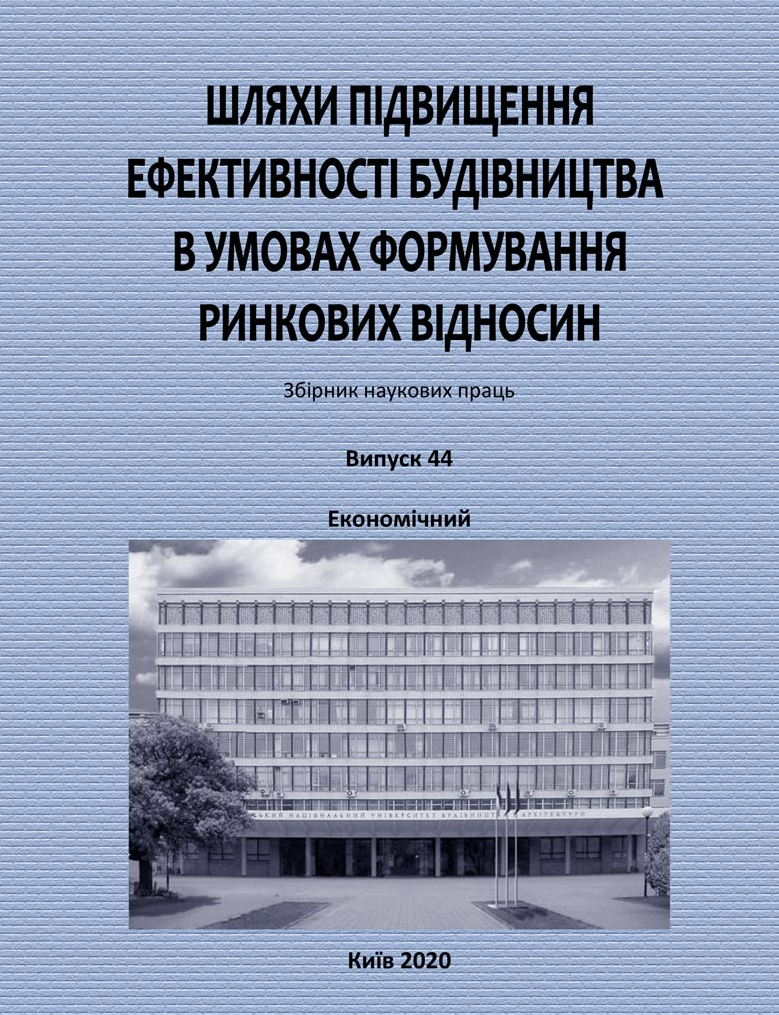Features of the audit of construction enterprises
DOI:
https://doi.org/10.32347/2707-501x.2020.44.24-30Keywords:
audit, audit steps, income, expenses, risks, dividendsAbstract
The article defines the legal basis of the audit in Ukraine, theoretical approaches to the audit of construction companies, the issue of assessment by the auditors of the risks associated with the implementation of a project for housing construction. A construction audit is an independent assessment of both the financial and technical indicators of a construction investment project. This procedure involves checking the quality of construction work, determining the actual value of the object and the actual volume of construction.
Building auditing is part of the management system and one of the most important components of the ISO 9001 quality system. As part of the funding expansion strategy, the audit of the organization is carried out as part of the audit in other areas of activity. Audit is conducted in two key areas: organization audit, project audit. It is determined that the construction audit is aimed at the study of common costs and pricing analysis, it is carried out at each stage of construction of the construction object. This process allows to identify the real volume of work, to determine the cost of finished products, to determine the quality of work performed at all stages of construction, to identify deviations from the project of the construction object.
Audit of construction organizations is carried out in accordance with the general principles, but has its specificity, related to the legal form and features of the industry to which the contracting entity belongs, namely: regulatory regulation of the cost of construction works, features of determining the financial result of construction contracts , the presence of risks associated with the activities of construction companies. Audit in construction companies can be both proactive and mandatory. The main purpose of an audit in a construction organization – reliable, real and objective information about the implementation of construction contracts. Construction audits are carried out both on a separate site during the entire construction process and in a continuous manner by controlling all costs.
In this article the main tasks of the audit of financial results are summarized and systematized, its peculiarities and main problems are defined, the recommendations on improvement of audit of financial results of construction organizations are given.
References
1. The Law of Ukraine "On Audit of Financial Reporting and Auditing" No. 2258-VIII..of.. 21,12.2017..Electronic..resource: https://zakon.rada.gov.ua/laws/show/2258-19
The Commercial Code of Ukraine of 16.01.2003 №436-4. Electronic resource: https://zakon.rada.gov.ua/laws/show/436-15
Decision No.290/7"On the Application of Auditing and Ethics Standards"dated 27,02,2014.Electronic..Resource:https://zakon.rada.gov.ua/rada/show/vr_07230-14
Code of Ethics for Professional Accountants. Electronic resource: https://lexinform.com.ua/wp-content/uploads/2018/09/Code-of-Ethics_eng.pdf
Gaja, T. V. & Kuz, V. I (2013) Building audit as a tool for monitoring the construction activiti.- URL: http://www.rusnauka.com/7_NITSB_2013/ Economics/7_130489.doc.htm
Brunko, P.V. (2011) Features of activity of construction industry enterprises. URL:..https://revolution.allbest.ru/economy/00899343_0.html
Burdio, I.M. (2015) Lviv Institute of Banking. Features of the audit of construction companies. Electronic resource: http://visnykonu.od.ua/journal/2015_20_2_1/43.pdf
Yovenko, I. (2014) Conduct internal audit at the enterprise: important aspects - URL: https://www.pspaudit.com.ua/files/iovenko.pdf
Downloads
How to Cite
Issue
Section
License
Copyright (c) 2020 V. V. Humeha

This work is licensed under a Creative Commons Attribution 4.0 International License.
Authors who publish with this journal agree to the following terms:
- Authors retain copyright and grant the journal right of first publication with the work simultaneously licensed under a Creative Commons Attribution License that allows others to share the work with an acknowledgement of the work's authorship and initial publication in this journal.
- Authors are able to enter into separate, additional contractual arrangements for the non-exclusive distribution of the journal's published version of the work (e.g., post it to an institutional repository or publish it in a book), with an acknowledgement of its initial publication in this journal.
- Authors are permitted and encouraged to post their work online (e.g., in institutional repositories or on their website) prior to and during the submission process, as it can lead to productive exchanges, as well as earlier and greater citation of published work (See The Effect of Open Access).

